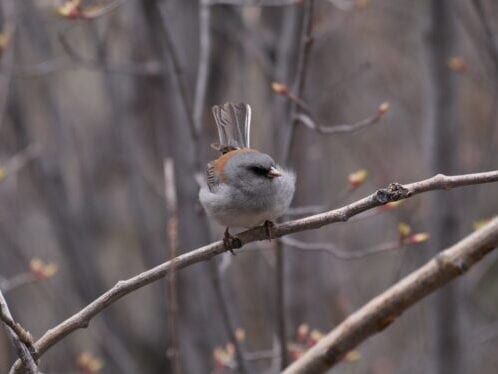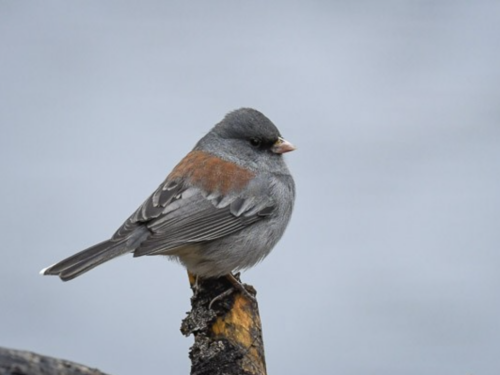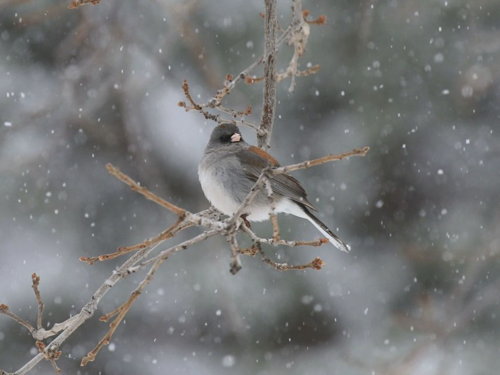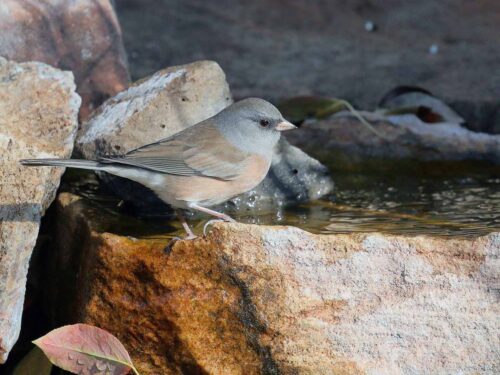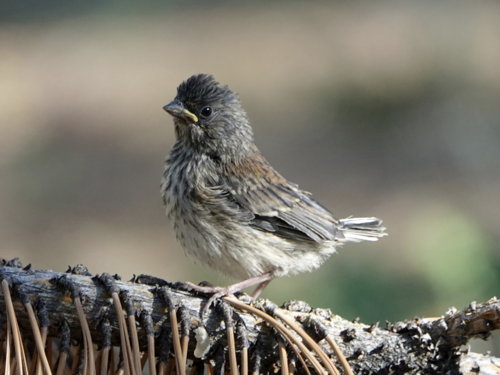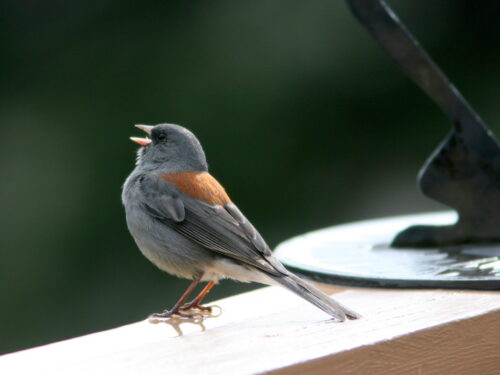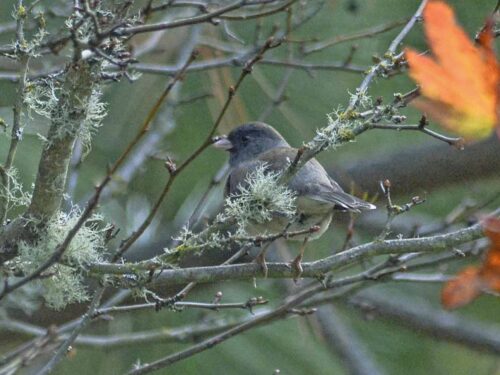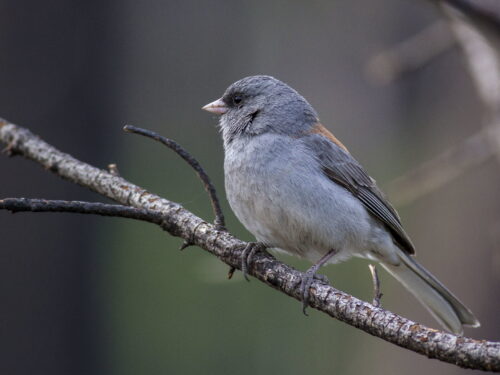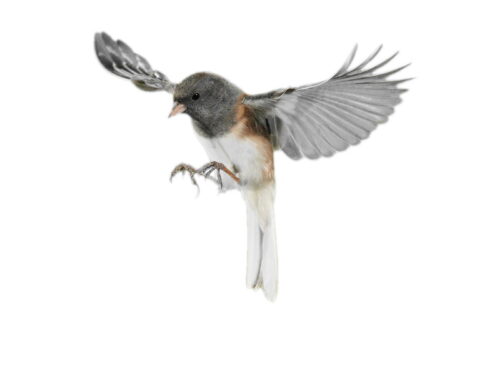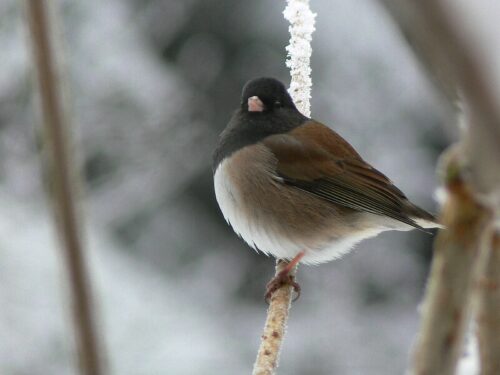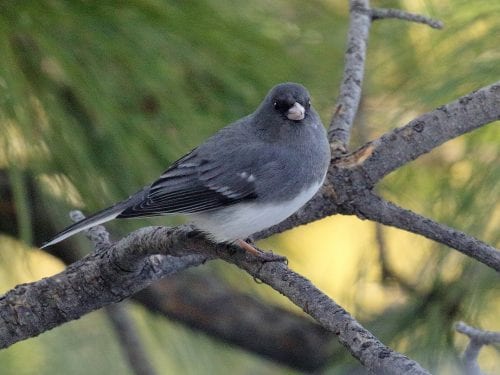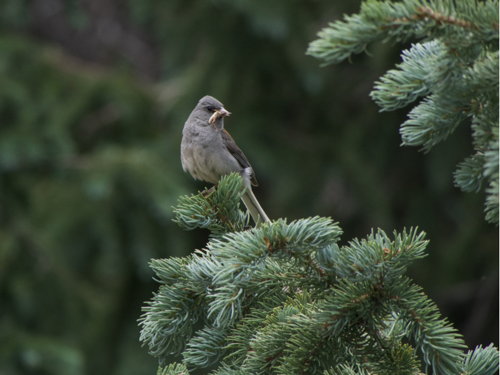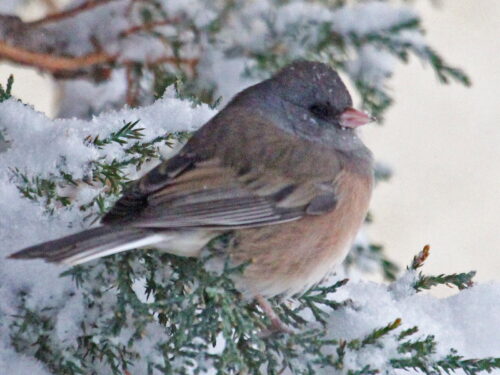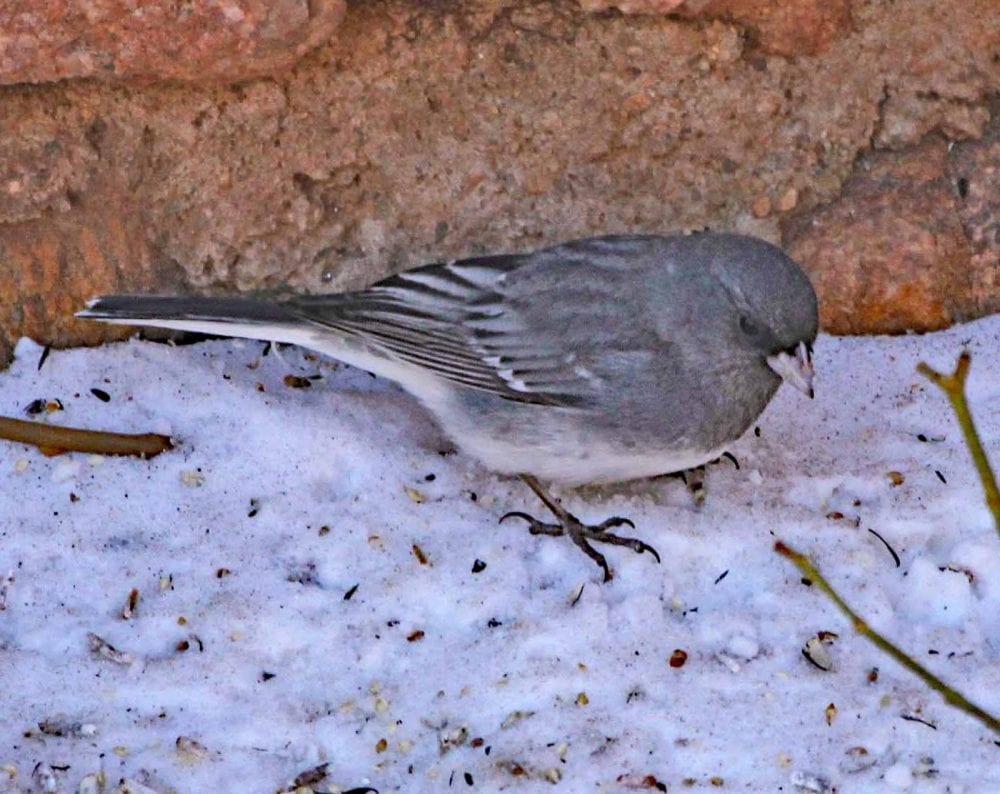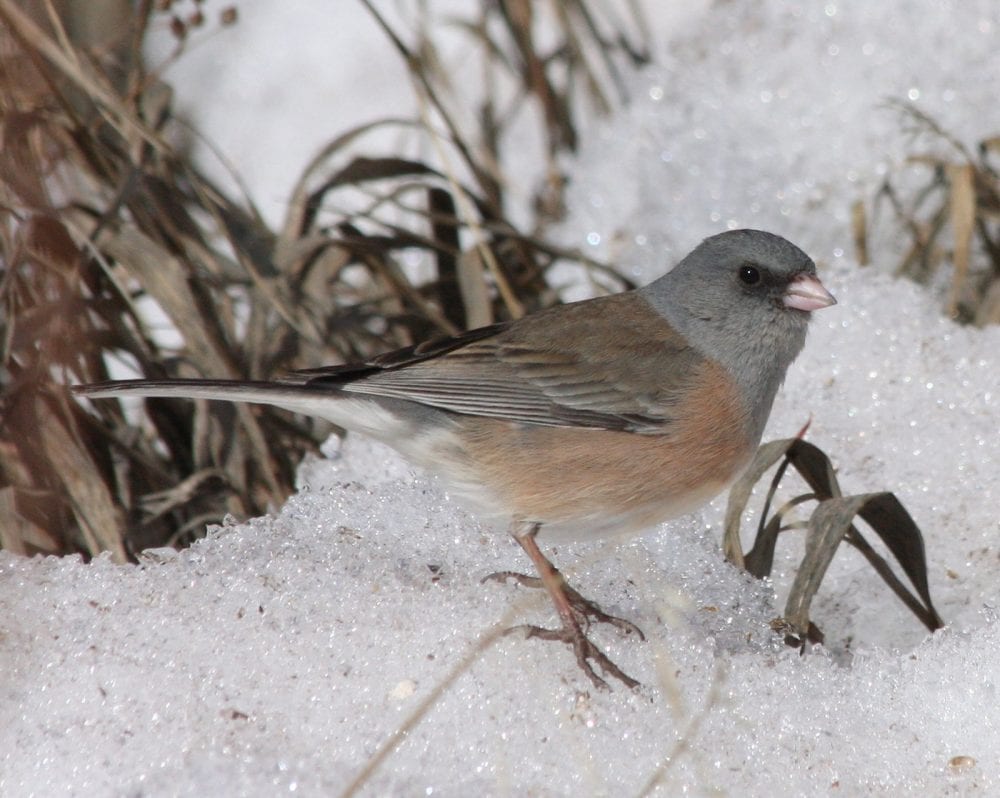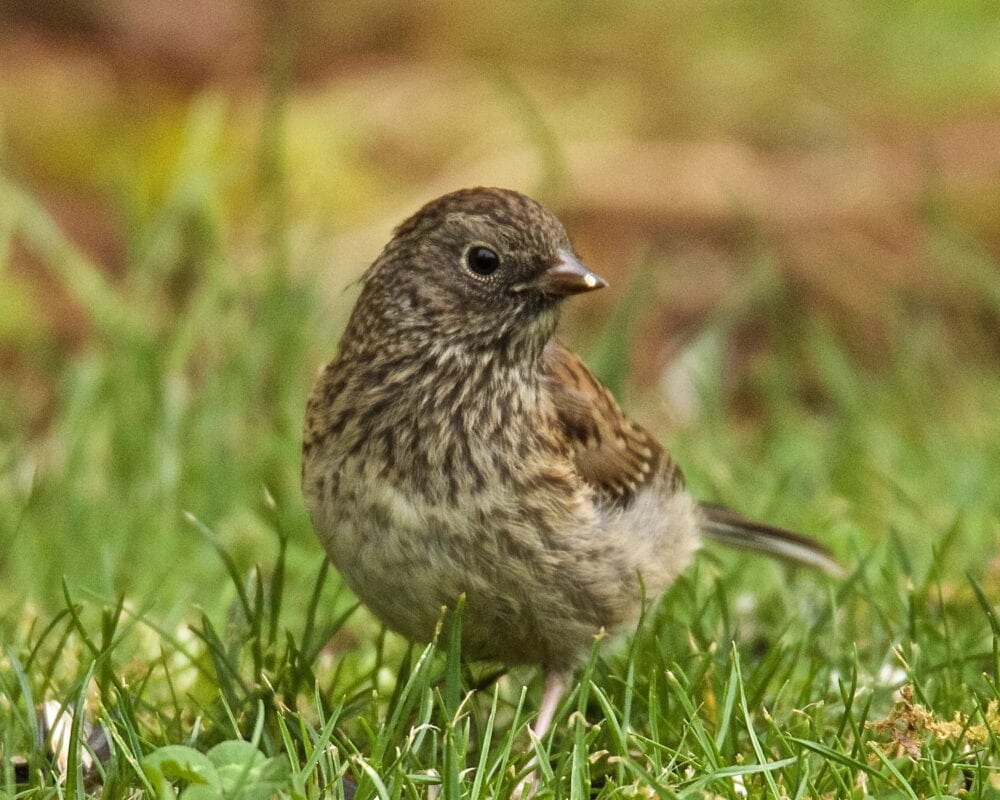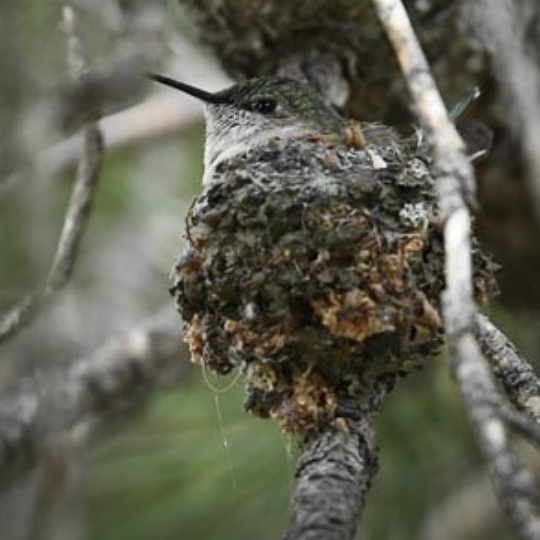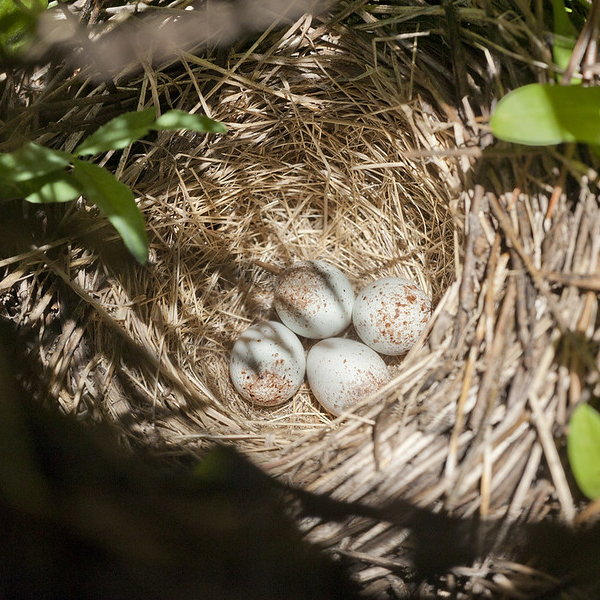Physical Description
Dark-eyed juncos are medium-sized sparrows with rounded heads, stout bills and a long tail. They also have pink bills and dark eyes.
Dark-eyed juncos as a species are very diverse with a large range of geographic variation with distinct plumage. These birds are easily mistaken for different species, particularly in areas where hybrids are possible. All five of these variants can be sighted in the Los Alamos area, with the white-winged the least seen.
- Oregon: dark hood, warm brown back, and rufous flanks (western US)
- Gray-headed: black mask, reddish brown back, and gray sides (Southwest)
- Pink-sided: light gray, faint dark mask, and pinkish-brown wash on flanks (Rocky Mountains and western Great Plains)
- Slate-colored: solid gray head, neck, and back with white chest and belly (primarily eastern US/ Canada but as far west as the Rocky Mountains)
- White-winged: gray but with a pair of white wing bars and white in the wings (northern Rocky Mountains)
Males tend to show bold field markings while females are usually a bit paler. Juveniles of all forms are heavily streaked with brown with darker heads and white bellies.
Oregon

Slated-colored

Range, Migration, and Habitat
Dark-eyed juncos can be found across the entire North American continent from coast to coast and from Alaska down to Mexico. Most populations are migratory, but some in the Southwest and along the Pacific coast may be permanent residents.
Dark-eyed juncos breed in coniferous or mixed-coniferous forests across much of Canada, the western US, and the Appalachians. They can be found at elevations ranging from sea level to more than 11,000 feet. In contrast, they spend the winter along the western coast of North America and and across southern Canada, south to Mexico. They join together in fairly large flocks in weedy fields, open woodlands, fields, parks, suburbs, and farmyards. Flocks of wintering birds may include several different groups.
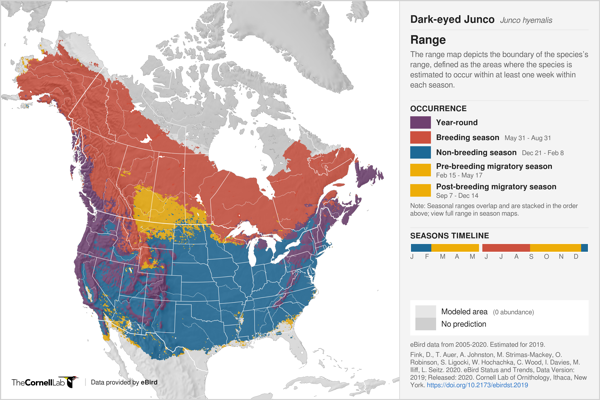
Diet
Dark-eyed Juncos eat insects such as beetles, moths, butterflies, caterpillars, ants, wasps, and flies during the breeding season. During the rest of the year they primarily feed on seeds from weeds and grasses. They will come to feeders, favoring millet and eating on the ground. Dark-eyed juncos drink water off of plant leaves or from streams or pools. During the winter, they eat snow.
Behavior and Social Life
Dark-eyed Juncos form flocks with a distinct social hierarchy. During winter they may also forage with other sparrows. They prefer to stay on the ground, more often hopping than walking, while pecking and scratching at the leaf litter and picking food off of the underbrush. They also have an interesting method of foraging called “riding”. They will fly up to the top of a grass seed cluster and “ride” it to the ground, then pick off the seeds while standing on it.
When dark-eyed junco roost at night they prefer to do so up in an evergreen but will also use tall grasses and brush piles. They may use the same spot repeatedly. While they will share the location with other flock members, they do not huddle together.
Dark-eyed juncos are very agile flyers enabling them to maneuver through tangled cover. They will occasionally fly up to catch insects from tree trunks but more often they will fly to chase off intruders, flashing their white tail feathers as a sign of alarm.
Only males sing. They use a warbling song to identify their territory. However, they have different calls for different purposes from a high chipping noise while foraging to an excited call when alarmed.
Life Cycle
Males arrive early at the breeding grounds in order to stake out a territory. They will sing from the top of the tallest trees in order to make their claim. Once the females arrive, the males will follow them around, strutting, singing, spreading their tails, and offering pieces of nesting material. During courtship, both members of a pair may hop around on the ground with wings drooped and tails spread to show off the white tail feathers.
By sometime in April, females will begin to build a nest on the ground hidden under plants, roots or rock overhangs. Sometimes, they may build nests in a tree or near man-made structures like hanging plants and beams, but no more than 8 feet above the ground. Nests are made of sticks, leaves, and moss and lined with grasses and animal hair.
Typically there are 3 to 6 white or greenish brown-spotted eggs. The eggs hatch around 12 to 13 days later with the young leaving the nest 9 to 13 days after that. Only the female incubates the eggs but both parents feed the chicks until they are about 3 weeks old and have left the nest. A pair of dark-eyed juncos can raise two or three broods per season.
Title
Ecological Role
Dark-eyed juncos disperse seeds and help to control insect populations. Adults are preyed upon by hawks and owls as well as feral and domestic cats. In addition, small rodents like squirrels and chipmunks take eggs and young from nests.
Interactions With Humans
In general there is not much direct interaction between dark-eyed juncos and humans. However, many individuals derive pleasure from watching and photographing them at bird feeders.
Interesting Facts
- The different dark-junco forms were considered to be separate species until the 1980s.
- Dark-eyed juncos are often called “snowbirds”.
- Dark-eyed juncos tend to return to the same area each winter.
- Males will often reclaim the same breeding territory each summer.
- Female juncos tend to migrate further south than most males.
- It is currently estimated that there are more than 260 million dark-eyed juncos.
- In summer, they spend approximately 4.5 hours each day foraging; in winter this is about 6 hours per day.
- Three-quarters of the junco’s diet is made up of seeds.
- Dark-eyed juncos migrate at night at low altitudes.
- There is a hierarch in winter flocks: adult males, juvenile males, adult females, and lastly young females.
- Dark-eyed juncos have 30% more feathers by weight in winter than in summer.
- Dark-eyed juncos will burrow through snow to reach seeds that have been covered over.

